Fundy Region Solid Waste Commission
Waste Management
Fabric Covered Buildings
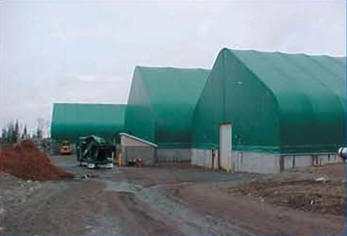
Four peak design
fabric buildings
were placed on a
4' thick by 5' high
concrete foundation.
Location:
St. John, New
Brunswick
Building Size:
120' wide by 60' long,
and 3 each 80' wide
by 180' long Waste
Management Fabric
Covered Buildings
Application:
Waste Management,
Composting and
Recycling
This Waste Management
System consists of the recycling and
composting processes
which are contained in
4
fabric buildings.
The peak design fabric buildings are
positioned on a 4'
thick by 5' high
push wall foundation
that provides a
tremendous
open-span work
environment for the
machine operators
and the 26' tall
elevated conveyor
system. "These
fabric buildings are the right buildings for the
waste management industry," says Chris Harned,
Waste Diversion Supervisor.
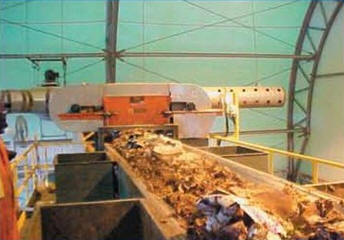
Sorting line and
electro magnet
remove large
contaminants in the
receiving hall.
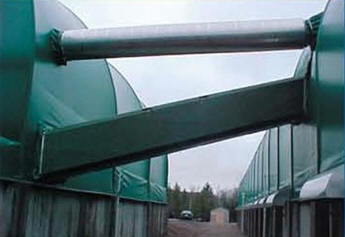
Enclosed conveyor
transports sorted
organics
to
compost halls.
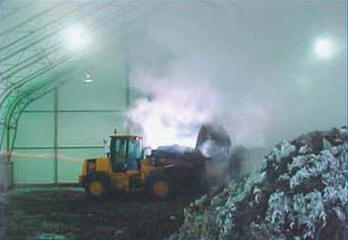
Machine operator
forms stockpile.
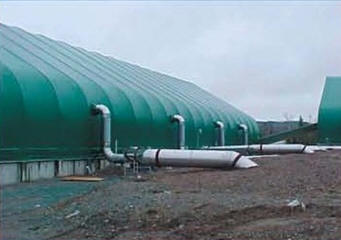
Bio Filters protect
workers and control
odor.
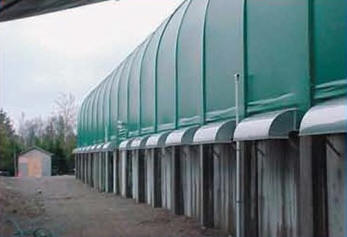
Positive air
exchange is pulled
in through
side air
vents.
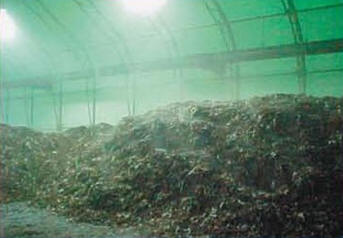
Quality Control
personnel monitor
temperature,
moisture,
and oxygen levels
within compost
windrows.
|








